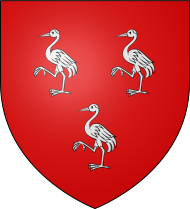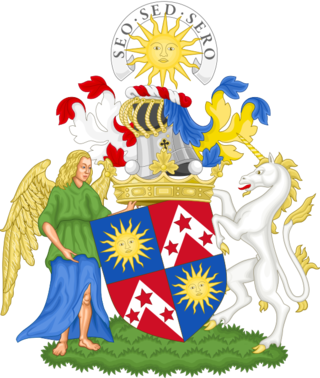
Marquess of Lothian is a title in the Peerage of Scotland, which was created in 1701 for Robert Kerr, 4th Earl of Lothian. The Marquess of Lothian holds the subsidiary titles of Earl of Lothian, Earl of Lothian, Earl of Ancram (1633), Earl of Ancram, Viscount of Briene (1701), Lord Newbattle (1591), Lord Jedburgh (1622), Lord Kerr of Newbattle (1631), Lord Kerr of Nisbet, Langnewtoun, and Dolphinstoun (1633), Lord Kerr of Newbattle, Oxnam, Jedburgh, Dolphinstoun and Nisbet (1701), and Baron Ker, of Kersheugh in the County of Roxburgh (1821), all but the last in the Peerage of Scotland. As The Lord Ker in the Peerage of the United Kingdom, previous marquesses sat in the House of Lords before 1963, when Scottish peers first sat in the House of Lords in their own right. The holder of the marquessate is also the Chief of Clan Kerr.
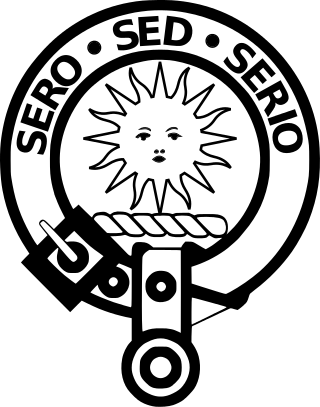
Clan Kerr is a Scottish clan whose origins lie in the Scottish Borders. During the Middle Ages, it was one of the prominent border reiver clans along the present-day Anglo-Scottish border and played an important role in the history of the Border country of Scotland.
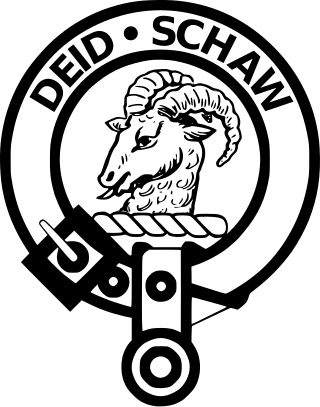
The Clan Ruthven is a Lowland Scottish clan.

Clan Borthwick is a Scottish clan.

Clan Chisholm is a Highland Scottish clan.

Clan Colville is a Lowland Scottish clan.

Clan Home is a Scottish clan. It held immense power for much of the Middle Ages and dominated the eastern Scottish Borders. It produced no fewer than eight Wardens of the Eastern March – more than any other family.

Clan Moncreiffe is a Highland Scottish clan.

Clan Oliphant is a Highland Scottish clan.

Clan Leask is a Scottish clan.
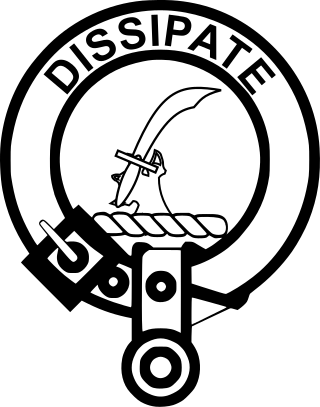
Clan Scrymgeour is a Highland Scottish clan.
Clan Straiton, also called Straton or Stratton, is a Lowland Scottish clan. The clan does not currently have a chief therefore it is considered an Armigerous clan.

Clan Swinton is a Scottish clan of the Scottish Lowlands.

Clan Marjoribanks is a Scottish clan of the Scottish Lowlands.
William Cranstoun, 3rd Lord Cranstoun was a Scottish Lord of Parliament and a renowned Cavalier.
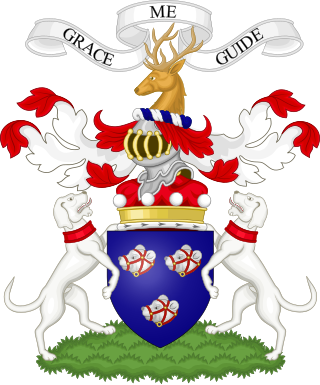
Clan Forbes is a Highland Scottish clan from Aberdeenshire, Scotland.
William Cranstoun, 1st Lord Cranstoun was a Scottish Lord of Parliament, who played a prominent part in the pacification of the Anglo-Scottish border in the early 17th century.
John Cranstoun, 2nd Lord Cranstoun was a Scottish Lord of Parliament.
David MacGill, McGill or Makgill, Lord Cranston Riddell (1532–1595) was a 16th-century Scottish judge and Senator of the College of Justice and Lord Advocate of Scotland from 1582 to 1595.
James Lindsay, 7th Lord Lindsay PC, Scottish landowner who was a gentleman of King James's bedchamber.

